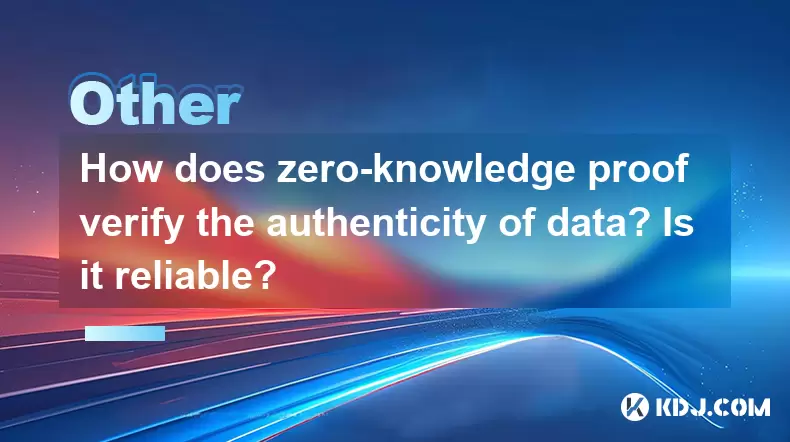-
 Bitcoin
Bitcoin $115200
-2.68% -
 Ethereum
Ethereum $3601
-5.16% -
 XRP
XRP $3.035
-2.96% -
 Tether USDt
Tether USDt $0.9997
-0.04% -
 BNB
BNB $764.5
-5.43% -
 Solana
Solana $168.1
-5.92% -
 USDC
USDC $0.9998
-0.02% -
 Dogecoin
Dogecoin $0.2090
-4.80% -
 TRON
TRON $0.3272
-0.49% -
 Cardano
Cardano $0.7306
-5.00% -
 Hyperliquid
Hyperliquid $39.16
-12.22% -
 Stellar
Stellar $0.3967
-4.96% -
 Sui
Sui $3.566
-5.95% -
 Chainlink
Chainlink $16.55
-6.57% -
 Bitcoin Cash
Bitcoin Cash $552.3
-3.90% -
 Hedera
Hedera $0.2516
-4.69% -
 Avalanche
Avalanche $21.99
-5.75% -
 Toncoin
Toncoin $3.621
-0.28% -
 Ethena USDe
Ethena USDe $1.000
-0.03% -
 UNUS SED LEO
UNUS SED LEO $8.951
0.02% -
 Litecoin
Litecoin $105.9
-3.59% -
 Shiba Inu
Shiba Inu $0.00001232
-5.00% -
 Polkadot
Polkadot $3.640
-5.55% -
 Uniswap
Uniswap $9.048
-7.03% -
 Monero
Monero $301.8
-1.51% -
 Dai
Dai $0.9999
-0.01% -
 Bitget Token
Bitget Token $4.334
-3.66% -
 Pepe
Pepe $0.00001064
-6.17% -
 Cronos
Cronos $0.1367
-5.78% -
 Aave
Aave $259.2
-4.59%
How does zero-knowledge proof verify the authenticity of data? Is it reliable?
ZKPs enhance privacy in cryptocurrencies like Zcash by verifying transaction authenticity without revealing sensitive data, ensuring both security and privacy.
May 16, 2025 at 11:49 pm

Zero-knowledge proof (ZKP) is a cryptographic method that allows one party to prove to another that a given statement is true, without revealing any additional information beyond the fact that the statement is true. In the realm of cryptocurrencies, ZKPs are used to enhance privacy and security, particularly in transactions. This article will explore how ZKPs verify the authenticity of data and discuss their reliability within the cryptocurrency ecosystem.
Understanding Zero-Knowledge Proofs
Zero-knowledge proofs operate on the principle of proving possession of certain information without disclosing the information itself. The concept was first introduced by Shafi Goldwasser, Silvio Micali, and Charles Rackoff in the 1980s. In the context of cryptocurrencies, ZKPs are instrumental in verifying transactions while maintaining the privacy of the parties involved.
The process involves a prover and a verifier. The prover aims to convince the verifier that a certain statement is true, without revealing any underlying details. For instance, in a cryptocurrency transaction, the prover could demonstrate that they possess the necessary funds for a transaction without revealing their entire wallet balance.
How ZKPs Verify the Authenticity of Data
To understand how ZKPs verify the authenticity of data, it's essential to delve into the mechanics of the proof process. Here's a step-by-step explanation:
Statement Definition: The first step involves defining a statement that the prover wants to prove. In a cryptocurrency transaction, this might be "I have enough funds to complete this transaction."
Proof Generation: The prover generates a proof that the statement is true. This proof must be constructed in such a way that it convinces the verifier without revealing any sensitive information.
Verification: The verifier checks the proof to ensure it satisfies the conditions of the statement. If the proof is valid, the verifier accepts that the statement is true.
Non-Disclosure: Throughout this process, no additional information beyond the validity of the statement is disclosed. This is the core principle of zero-knowledge proofs.
For example, in a blockchain network using ZKPs, a user can prove they have the necessary funds for a transaction without revealing their wallet balance or the transaction amount. The network verifies the transaction's validity without accessing sensitive data, ensuring both privacy and security.
The Role of ZKPs in Cryptocurrencies
In the cryptocurrency world, ZKPs are primarily used in privacy-focused cryptocurrencies like Zcash and in certain Ethereum smart contracts. They allow users to transact securely and privately, which is a significant advantage over traditional blockchain systems where transaction details are publicly visible.
Zcash, for instance, uses a type of ZKP called zk-SNARKs (Zero-Knowledge Succinct Non-Interactive Argument of Knowledge) to enable private transactions. Users can send and receive funds without revealing the transaction details to the public blockchain.
Ethereum has also explored the use of ZKPs through projects like zk-Rollups, which are layer-2 scaling solutions that use ZKPs to batch multiple transactions into a single proof, improving scalability and privacy.
Reliability of Zero-Knowledge Proofs
The reliability of ZKPs in verifying the authenticity of data hinges on several factors, including the cryptographic strength of the proof system and the implementation of the protocols.
Cryptographic Strength: ZKPs are based on well-established cryptographic algorithms, which are considered secure if implemented correctly. The security of ZKPs relies on the difficulty of solving certain mathematical problems, such as the discrete logarithm problem.
Implementation: The reliability of ZKPs also depends on the correctness of their implementation. Any flaws in the code or the protocol can lead to vulnerabilities. Therefore, rigorous testing and auditing are crucial to ensure the reliability of ZKP systems.
Real-World Use: ZKPs have been successfully implemented in various cryptocurrency projects, demonstrating their practical reliability. For example, Zcash has been operational since 2016, and its use of zk-SNARKs has been extensively tested and audited.
Challenges and Considerations
While ZKPs offer significant benefits in terms of privacy and security, there are also challenges and considerations to keep in mind.
Complexity: The implementation of ZKPs can be complex and resource-intensive. Generating and verifying proofs require significant computational power, which can be a barrier for some users and applications.
Scalability: While ZKPs can enhance privacy, they can also impact the scalability of a blockchain network. The computational overhead of generating and verifying proofs can slow down transaction processing times.
Trust in Setup: Some ZKP systems, like zk-SNARKs, require a trusted setup phase. If this setup is compromised, it could undermine the security of the entire system. Ensuring the integrity of this setup is critical for the reliability of ZKPs.
Practical Applications of ZKPs in Cryptocurrencies
ZKPs have found numerous practical applications within the cryptocurrency ecosystem. Here are some notable examples:
Private Transactions: As mentioned earlier, cryptocurrencies like Zcash use ZKPs to enable private transactions. Users can send and receive funds without revealing the transaction details to the public blockchain.
Scalability Solutions: ZKPs are used in layer-2 scaling solutions like zk-Rollups on Ethereum. These solutions batch multiple transactions into a single proof, improving scalability and reducing transaction fees.
Identity Verification: ZKPs can be used for identity verification without revealing personal information. For example, a user can prove they are over a certain age without disclosing their exact birthdate.
Regulatory Compliance: ZKPs can help meet regulatory requirements for privacy and data protection. They allow organizations to prove compliance with regulations without revealing sensitive data.
FAQs
Q: Can zero-knowledge proofs be used to verify the authenticity of data in non-cryptocurrency applications?
A: Yes, zero-knowledge proofs have applications beyond cryptocurrencies. They can be used in various fields such as secure voting systems, identity verification, and data privacy. For instance, in a secure voting system, a voter can prove they are eligible to vote without revealing their identity.
Q: Are there different types of zero-knowledge proofs, and how do they differ?
A: Yes, there are several types of zero-knowledge proofs, each with its own characteristics. Some common types include zk-SNARKs, zk-STARKs, and Bulletproofs. zk-SNARKs are succinct and non-interactive but require a trusted setup. zk-STARKs are scalable and do not require a trusted setup but are less succinct. Bulletproofs are used for range proofs and are efficient but less versatile than zk-SNARKs and zk-STARKs.
Q: How do zero-knowledge proofs impact the performance of blockchain networks?
A: Zero-knowledge proofs can impact the performance of blockchain networks in several ways. They can increase the computational overhead required for generating and verifying proofs, which can slow down transaction processing times. However, they can also improve scalability by enabling solutions like zk-Rollups, which batch multiple transactions into a single proof.
Q: Are zero-knowledge proofs susceptible to quantum computing attacks?
A: The impact of quantum computing on zero-knowledge proofs is a topic of ongoing research. Some ZKP systems, like those based on the discrete logarithm problem, could be vulnerable to quantum attacks. However, other systems, such as those based on lattice problems, are considered more resistant to quantum computing. As quantum computing technology advances, the cryptographic community is actively working on developing quantum-resistant ZKP systems.
Disclaimer:info@kdj.com
The information provided is not trading advice. kdj.com does not assume any responsibility for any investments made based on the information provided in this article. Cryptocurrencies are highly volatile and it is highly recommended that you invest with caution after thorough research!
If you believe that the content used on this website infringes your copyright, please contact us immediately (info@kdj.com) and we will delete it promptly.
- Cardano Price, Pi Network, and Crypto Presales: What's the Buzz?
- 2025-08-02 08:50:12
- XRP Fund Success: Teucrium CEO Reveals Trillions on the Horizon
- 2025-08-02 09:10:12
- Challenge Coins: More Than Just Collectibles – A Military Tradition
- 2025-08-02 08:30:12
- Under the Radar: Hunting for 100x Crypto Gems in a Pi Network World
- 2025-08-02 08:30:12
- Bitcoin, Solana, and Altcoin Season: What's Hot and What's Not?
- 2025-08-02 07:10:12
- Toncoin, Rollblock, and the Token Offering Landscape: A New York Minute
- 2025-08-02 07:10:12
Related knowledge

What is the difference between a blockchain and a database?
Aug 01,2025 at 09:36pm
Understanding the Core Structure of a BlockchainA blockchain is a decentralized digital ledger that records data in a series of immutable blocks linke...

What is a hash in a blockchain?
Aug 02,2025 at 05:28am
Understanding the Concept of Hash in BlockchainA hash in the context of blockchain technology refers to a unique digital fingerprint generated by a cr...

What is a hash in a blockchain?
Aug 02,2025 at 04:43am
Understanding the Concept of Hash in BlockchainA hash in the context of blockchain technology refers to a unique digital fingerprint generated by a cr...

Who created blockchain?
Aug 02,2025 at 05:15am
What Is Blockchain and Why Does Its Origin Matter?Understanding who created blockchain begins with recognizing what blockchain actually is. Blockchain...

How to start a business using blockchain?
Jul 28,2025 at 12:36am
Understanding the Basics of Blockchain TechnologyBefore diving into the process of starting a business using blockchain, it's crucial to understand wh...

What is a token on the blockchain?
Jul 21,2025 at 07:00am
Understanding the Concept of a TokenIn the realm of blockchain technology, a token is a digital representation of an asset or utility that exists on a...

What is the difference between a blockchain and a database?
Aug 01,2025 at 09:36pm
Understanding the Core Structure of a BlockchainA blockchain is a decentralized digital ledger that records data in a series of immutable blocks linke...

What is a hash in a blockchain?
Aug 02,2025 at 05:28am
Understanding the Concept of Hash in BlockchainA hash in the context of blockchain technology refers to a unique digital fingerprint generated by a cr...

What is a hash in a blockchain?
Aug 02,2025 at 04:43am
Understanding the Concept of Hash in BlockchainA hash in the context of blockchain technology refers to a unique digital fingerprint generated by a cr...

Who created blockchain?
Aug 02,2025 at 05:15am
What Is Blockchain and Why Does Its Origin Matter?Understanding who created blockchain begins with recognizing what blockchain actually is. Blockchain...

How to start a business using blockchain?
Jul 28,2025 at 12:36am
Understanding the Basics of Blockchain TechnologyBefore diving into the process of starting a business using blockchain, it's crucial to understand wh...

What is a token on the blockchain?
Jul 21,2025 at 07:00am
Understanding the Concept of a TokenIn the realm of blockchain technology, a token is a digital representation of an asset or utility that exists on a...
See all articles

























































































